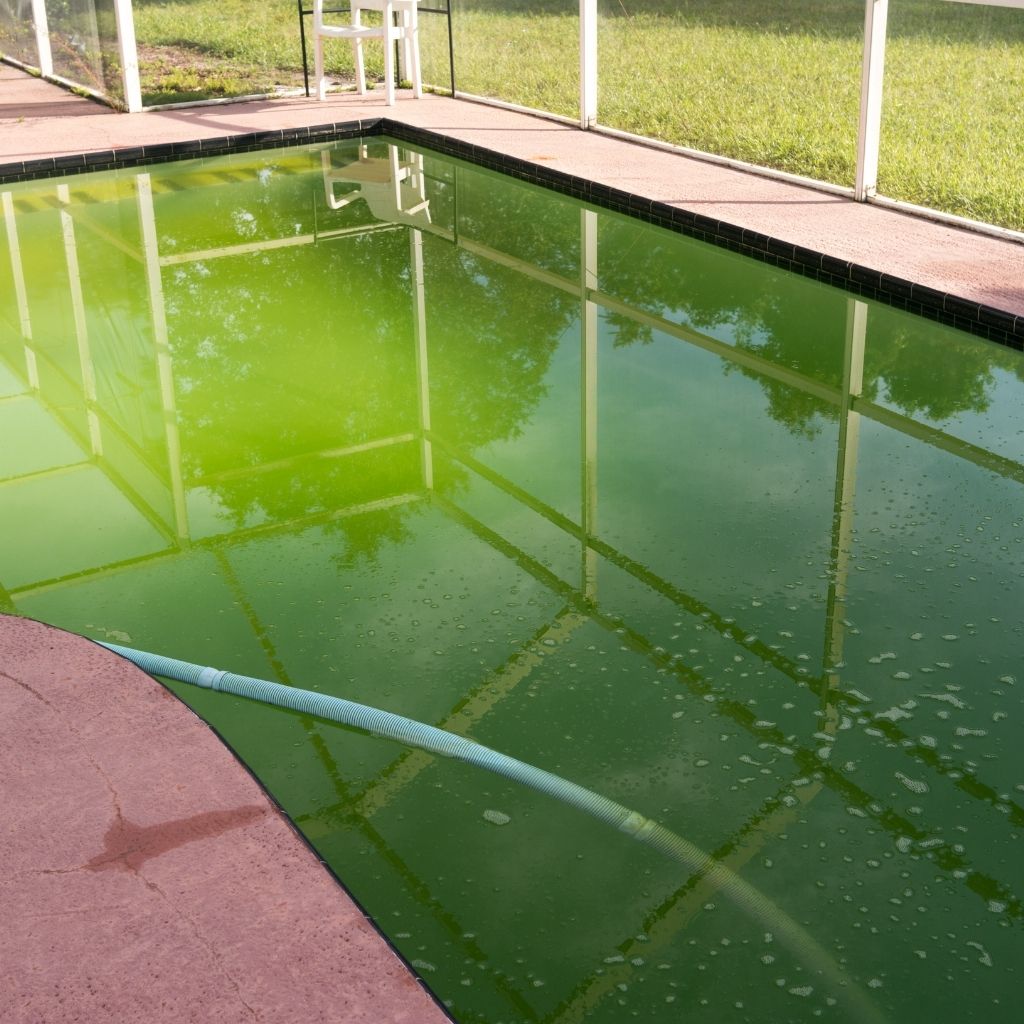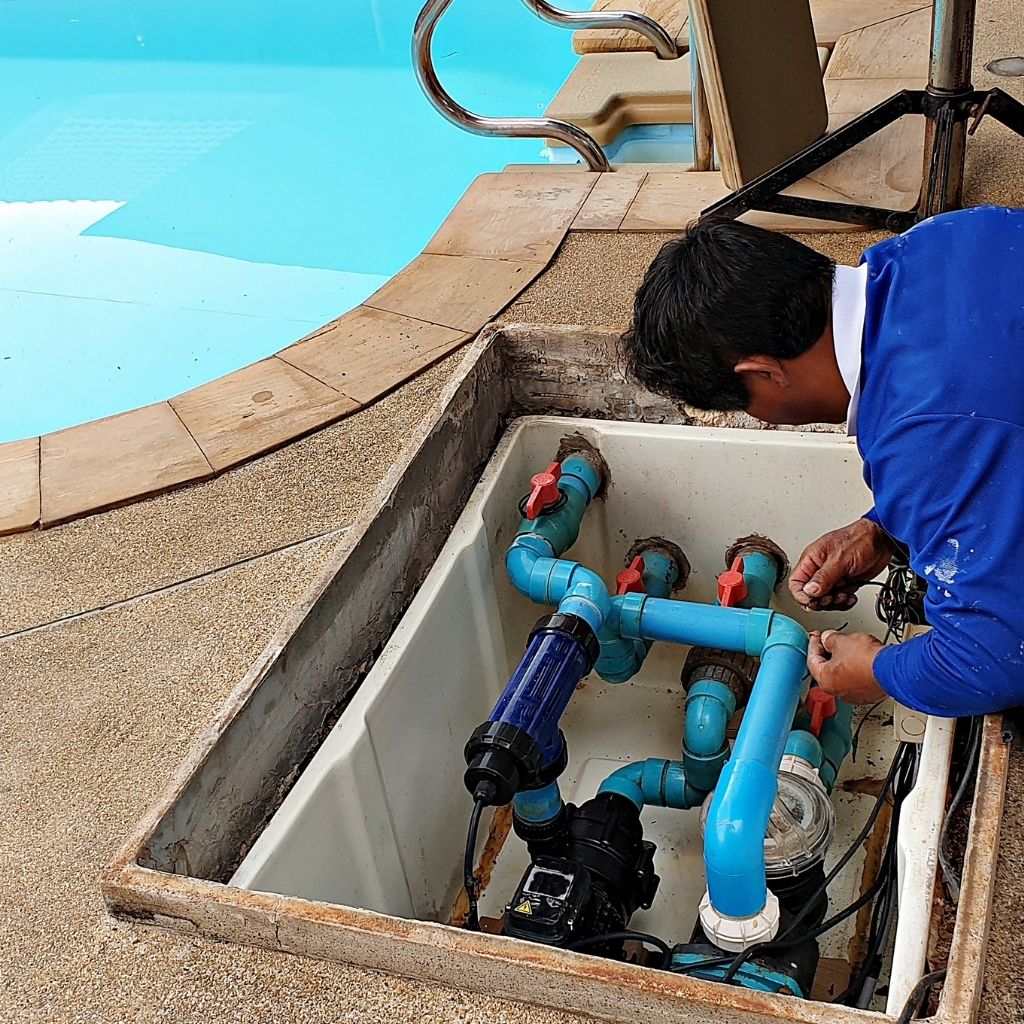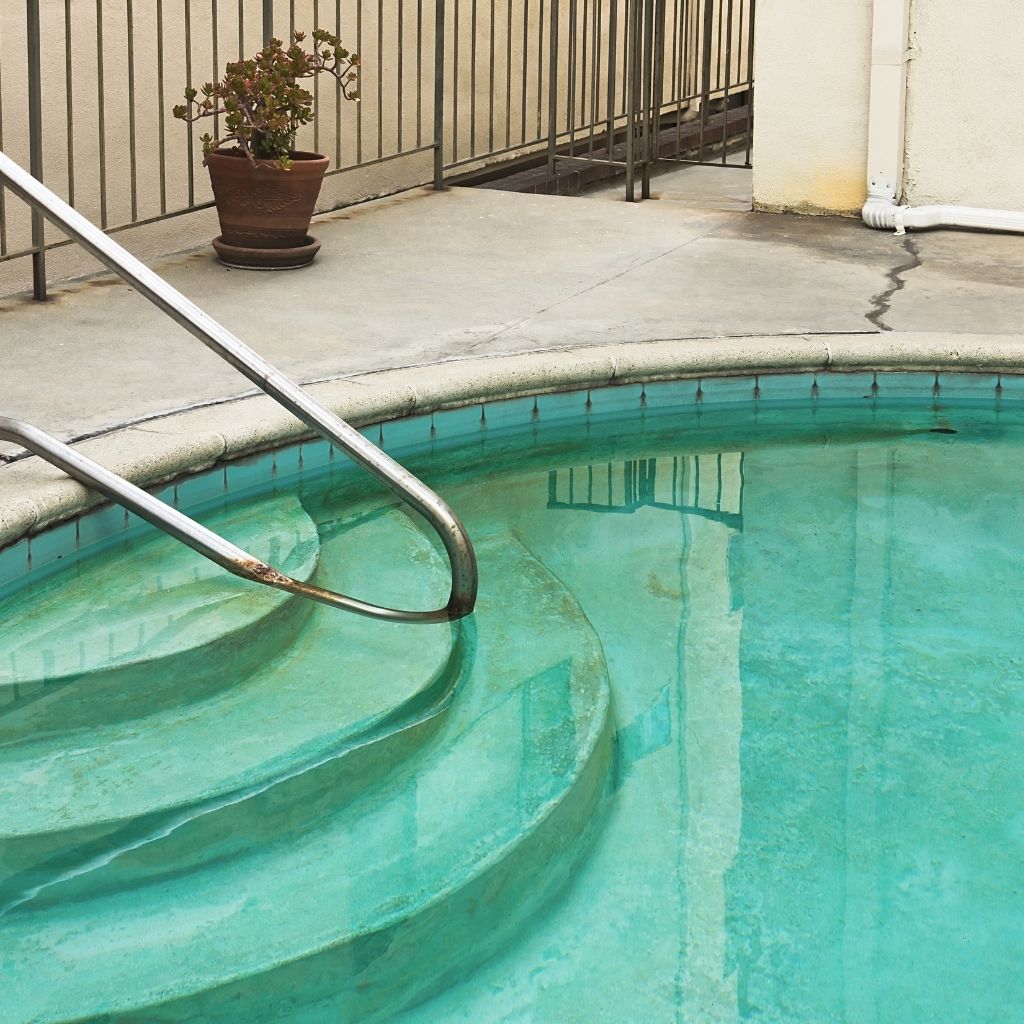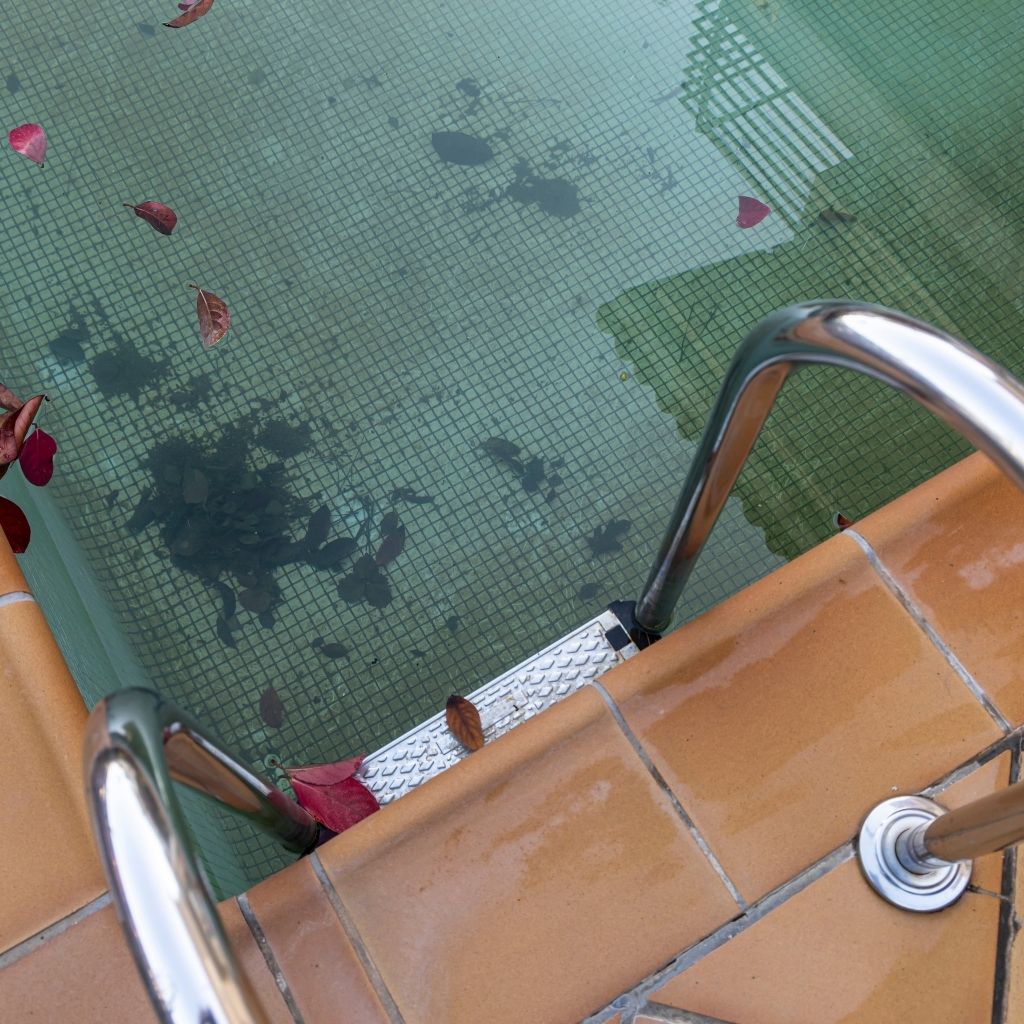For many home swimming pool owners, algae can be a problem and often owners find it difficult to prevent and control.
Understanding what causes algae in a swimming pool and how to prevent it from growing and becoming a problem is a better approach to take than having algae and then trying to get rid of it. Algae is a form of plant growth which will thrive in a poorly maintained and treated garden swimming pool.
 Algae are members of the plant family and, like most plants, they get their food through a process called ‘photosynthesis‘ when they are exposed to daylight.
Algae are members of the plant family and, like most plants, they get their food through a process called ‘photosynthesis‘ when they are exposed to daylight.

When conditions are right, when there is a lot of daylight and high levels of sunshine, algae grow and multiply very quickly.
Even if a pool is treated with chlorine, there are some conditions when algae can develop quickly in a pool.
The most common areas for algae to start growing are the sides of a pool or on some parts of the floor. This is normally in parts of the pool where the water circulation is poor, such as in the corners.
Slow circulation can prevent the even distribution of the chlorine so, in these areas, the chemical does not get dispersed properly or in enough quantity to kill the algae or stop it from growing.
How to get rid of algae in a swimming pool
If you have a problem with algae growing in your swimming pool then there are a few things that you can do to get rid of it and stop it from coming back:
- You will need to scrub the areas of algae to loosen it so that the chlorine shock will have the best chance to kill it.
- You can temporarily raise the levels of the pool disinfectant in the area of the algae to kill any algal cells that are in the water. The easiest way to do this is to shock dose your swimming pool using calcium hypochlorite granules.
- When the algal growth is killed off you can stop it from growing back by using an algicide that you add to the water.
- Like all plants, algae need nitrogen and phosphates for their food. By removing phosphates from the water you will starve the algae of their food source. You can get proprietary phosphate removers for swimming pools that will do this job for you.

Swimming pool phosphate removers
[amazon box=”B0002IXKS4,B00PZZFQRM,B00CMQZZJ6″ grid=”3″]
Frequently asked questions about algae
Is algae in a swimming pool dangerous?
Generally, algae is not dangerous to humans. But, if you leave algae in a swimming pool for a long time, then it will grow and multiply and become a breeding ground for harmful microbes. The bacteria that these microbes contain can affect the health of swimmers that are using the pool.
Is it safe to swim in a pool with algae?
Algae grows in swimming pools when there is a problem with the chemicals in the pool. The algae can cause problems for swimmers if it has been there for a long time as it can contain harmful bacteria.
Does pool shock kill algae?
Yes it does but depending on the size of your pool and the amount of algae this might take several shock efforts over a 36 hour period.

Does baking soda kill pool algae?
You can use baking soda to help you to get algae off the walls and floor of the pool before you shock the pool with calcium hypochlorite.
You should always try to free as much algae as possible into the water to give the pool shock the best start in killing it.
Does vinegar kill algae?
You can use vinegar on small areas of algae to kill it. Pouring vinegar into your pool will not work however.
Can you vacuum algae out of a pool?
You can use your pool vacuum to remove as much algae as possible, making sure that it goes straight into waste to get rid of it.
The vacuum will not get rid of the cause of the algae growth, however, and you will need to look at this, checking your chlorine and phosphate levels in the pool as it is likely that treatment is needed.
Can I add algaecide and shock at the same time?
No. You should not add them at the same time as it will make both sets of chemicals ineffective and they will not work.

Can too much chlorine cause algae?
Too much combined chlorine can be a cause of algae.
Combined chlorine is chlorine that has done it’s job and attracted dirt and is, effectively useless.
Your pool needs free chlorine to keep algae in check.
You should check your combine chlorine levels and if too high then backwash the pool or drain and replace water and then re-chlorinate.
Do I use shock or algaecide first?
You should always shock the pool first. If you did it the other way round then the shock would make the algaecide useless.
Only add the algaecide when the chlorine levels have fallen below 5ppm ( parts per million).
Best selling swimming pool algaecides
[amazon bestseller=”swimming pool algae” items=”5″ template=”table”]
Conclusion – What causes algae in a garden swimming pool?
Preventing algae is easier than getting rid of it.
Scrubbing and shocking a pool can be time consuming and, depending on the levels of algae, expensive.
Making sure that you keep your pool clean and free from dirt and debris and checking chemical levels regularly are important tasks to minimising the opportunities for algae to grow.






